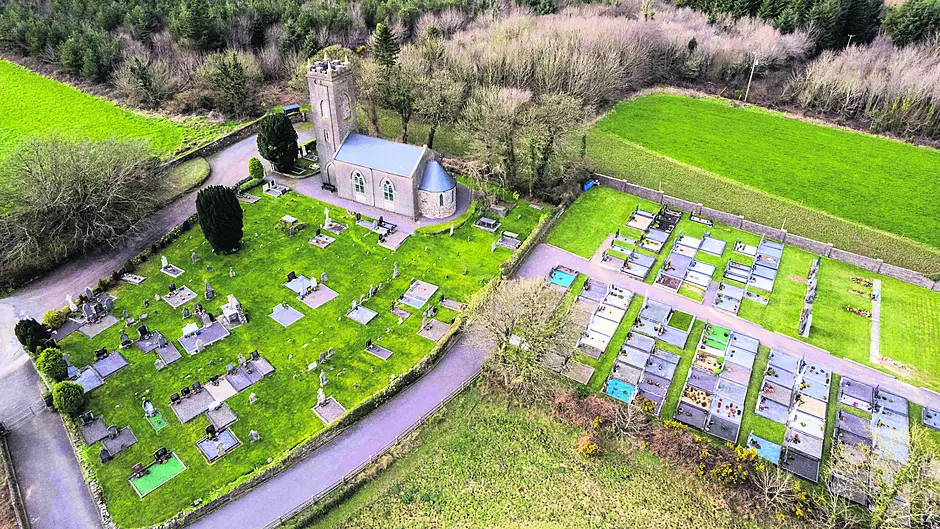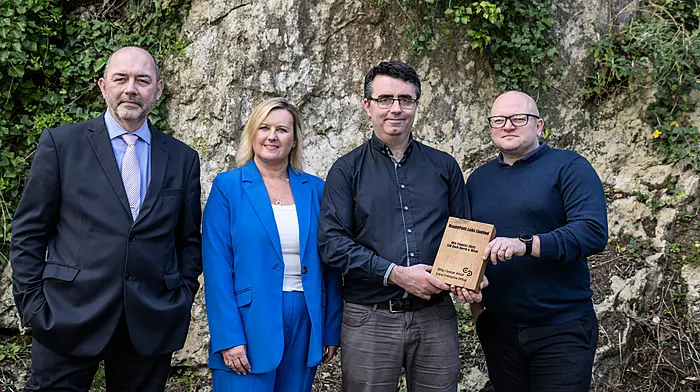Author Christopher Deliso is intent on reviving interest in a West Cork writer who has been sadly overlooked, but was a contemporary of Arthur Conan Doyle’s and was even mentioned in Lolita author Vladimir Nabokov’s memoirs
BANDON was the birthplace of a world-famous author – one who competed with Arthur Conan Doyle, edited Robert Louis Stevenson, and who was noted in the memoirs of Russian writer Vladimir Nabokov. This West Cork author was a woman.
Several Co Cork experts I surveyed hadn’t heard of LT (Elizabeth Thomasina) Meade, who published almost 300 titles, including children’s stories, mysteries, ghost tales and historical fiction. And despite Meade’s achievements, neither monument nor museum exists in her honour, neither in Bandon nor any other related sites.
This omission ignores Meade’s contributions to literature and education, and her singular example. She proved that female writers could compete with the best male authors, while succeeding at a high level in writing and editing. Creating a tangible memorial to LT Meade would rectify the current injustice and could also attract much-needed tourism to Bandon and West Cork in general.
A Bandon local involved in historical and tourism promotion confides that literature groups are ‘delighted to hear of Meade’s connection to West Cork and we look forward to celebrating her in future.’
As a writer and travel author, I approach the ‘Meade case’ with respect and pragmatism. How (and where) Meade’s memory can best be celebrated, I leave to local planners, though my recent research will clarify some options.
The eldest of seven children of Rev Richard Thomas Meade and Sarah Lane, Elizabeth (‘Lillie’) Thomasina Meade was born in Killowen near Bandon, on June 5th 1844. In 1866, the family moved to Templetrine, near Ballinspittle. By this time, Lillie was already the family storyteller. Her writing ambitions were uniquely inspired by Templetrine Manor.
‘The large rambling house had winding staircases, mysterious passages and reputed ghosts,’ notes Veronica Buckley in a 2014 Bandon Historical Journal article on the writer.
‘Having a great open courtyard, it also had a castle wing attached.’
Despite her idyllic childhood, Meade’s writing aspirations faced obstacles, which she nonetheless overcame. Her disapproving father hid the writing paper so she jotted in the Cork newspaper’s margins. Unlike her brothers, Lillie was home-schooled. When her best friend died aged 15, the saddened girl chose to commemorate her in a published novel, an idea that ‘horrified’ her father, Buckley relates. However, through sheer force of will, Lillie found a London publisher to print the (anonymous) title in 1866; Rev Meade even cut the string on the incoming parcel of books in celebration. Now 22, Meade was overjoyed at her first novel.
Determined to become a professional writer, Meade moved to London in 1875, following her mother’s death and father’s remarriage. I had suspected this ‘exile’ might explain Meade’s mysterious non-commemoration in Ireland today.
However, as Buckley reveals, Meade kept her local ties. An unexpected loan from her late mother’s Irish friend helped Meade establish herself in London, and in 1879 she married an Englishman in Christchurch, Cork.
During her 50-year career, Meade wrote for Irish publications, worked with Irish writers, and used scenes ranging from the Great Famine to her Templetrine childhood home for various plot settings.
So, while Meade’s work often employs English settings, clearly Ireland, and Co Cork, remained ever close to her heart.
In London, Meade’s work featured in leading magazines; she also co-founded Atalanta, a groundbreaking monthly magazine for girls, which featured well-known authors and aided emerging writers, especially females. And, though a feminist and suffragette, Meade co-authored several mysteries with men.
Today, Meade has won many new fans online, while scholars and publishers have started reviving this long-neglected Irish writer, in anthologies and reprints. But it’s hardly enough.
LT Meade published 280 titles, while battling failing eyesight in her later years. She was the family’s main breadwinner and also raised the children.
So, how best should West Cork commemorate Meade?
Killowen church, her baptismal site, still stands but is privately-owned, and thus unavailable. At Templetrine (still a functioning church) the Meade estate was sold in 1877 and in 1944, demolished. Only its school’s ruins remain. However, it’s a beautiful area, near the Wild Atlantic Way, and might suit.
Nevertheless, Bandon town might be optimal. It could integrate LT Meade into its festivals, and create an informative memorial to welcome admirers of the town’s most important literary daughter. With the outside world taking new interest in her, it’s best to be prepared for visitors.
• Christopher Deliso is an American author of many articles and books on history, culture, travel and current events, based in southeast Europe. He studied Byzantine History at the University of Oxford (MPhil, 1999). See www.christopherdeliso.com








